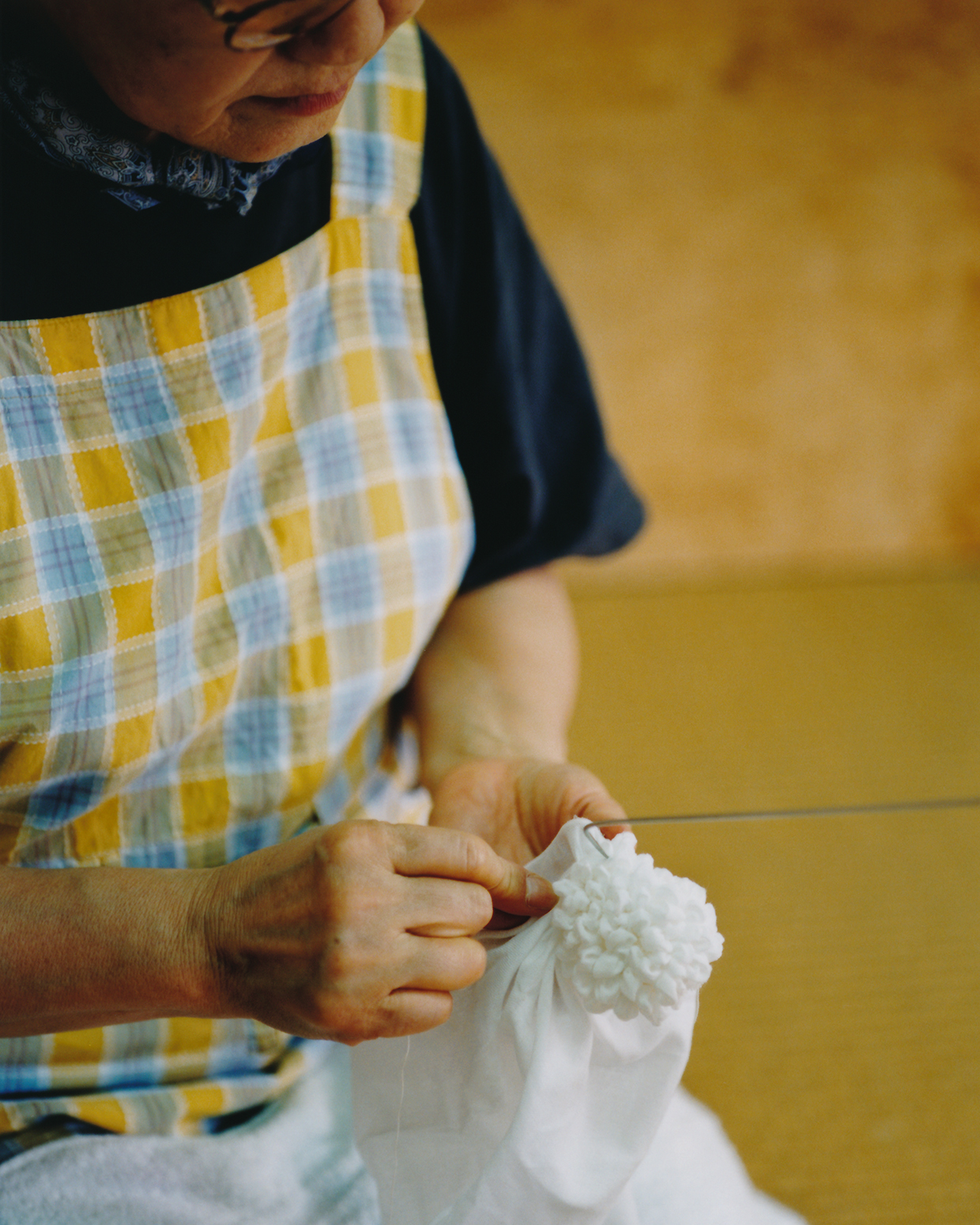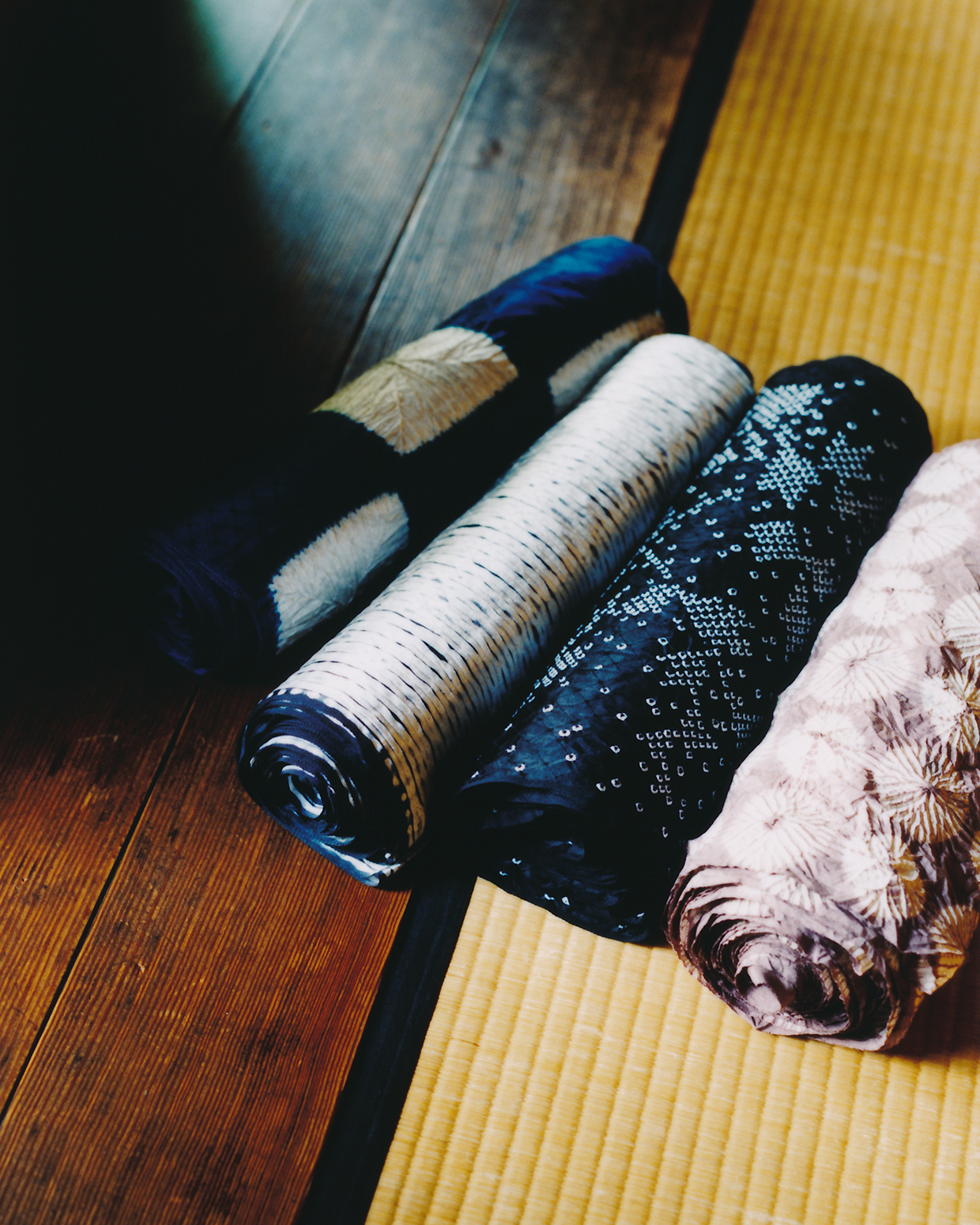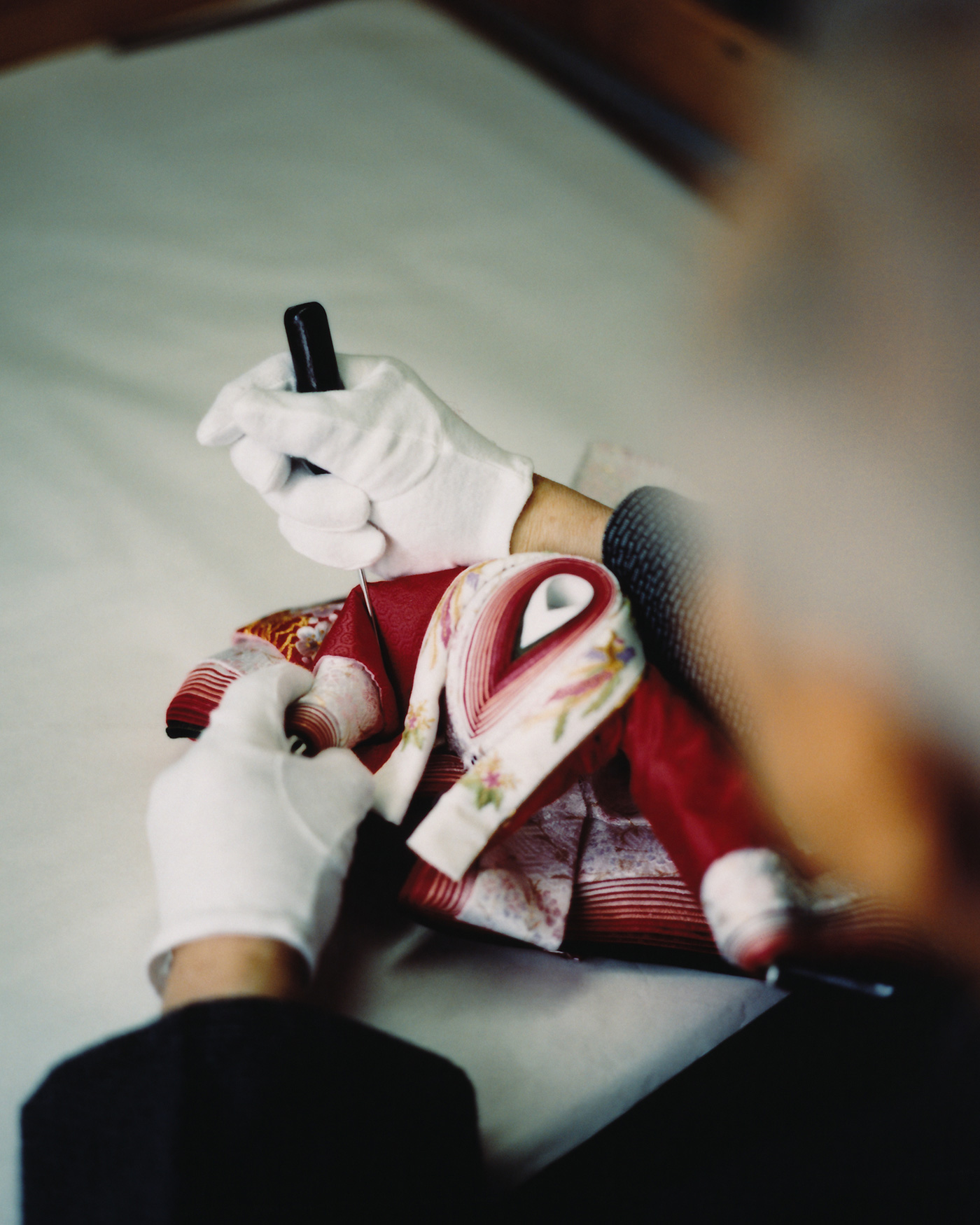In the history of Chiyodaya, the product you are making now for this project is a gown, isn’t it? Have you ever produced gowns before? What does it mean to you to create a new product?
We have never made one in-house. So, to be honest, the item is also a surprise. Gowns are not something that is very familiar in Japanese culture. I don’t know how Europeans actually use gowns and bathrobes, but I’ve seen them in movies, so maybe there is a demand for such items. I thought it was interesting. However, we don’t actually use them in our daily lives, so I am a little concerned about the quality of the products we made.
Are there any special characteristics of the materials used for this product?
The material is cotton, but the choice of cotton material is still a bit difficult. We are particular about the cotton material that gives a luxurious feel.
Why did you choose cotton as the material for the kimono instead of silk?
The reason why we chose the concept of cotton is that Arimatsu originally started to tie-dye tenugui, and even today it has a strong image of products such as yukata (summer kimonos). Shokuro Takeda came to this area in 1608, and the reason why he decided to make and sell tenugui at that time was because of the material, cotton. At that time, cotton could be grown stably in this area. These materials are called Mikawa cotton and Chita cotton. With this image of historical origin in mind, we decided to make this gown out of cotton.

What type of shibori technique is used to create the gowns?
Three techniques are used: “tsukidashi shikago-shibori”, “mokume-shibori”, and “hatsushibori”. This technique itself has been around for a long time. We chose the shibori that best expresses Furukawa’s design.
The fact that there are three different techniques means that each one is ordered by a different craftsman. So by creating these three variations, you are getting more work.
Yes, that’s right.
Now that you are the third generation of Kushida-san, I think it will be difficult to mechanize Arimatsu/Narumi shibori because there are techniques without underpainting and techniques that only the artisan can do, but what do you think it means for Kahei Takeda Shoten to make things by hand in this day and age? What kind of vision do you have for the transmission of the techniques of
Technology will continue to advance with AI. We are now at the point where, although it is not possible yet, once machines are able to perform the same movements as humans, it may be possible to squeeze them.
That is why I think that what real human beings can do, which is in the opposite direction, will be the focus of attention once again. I believe that the more progress is made, the more attention will be paid to the craft side, the human side, and I have high expectations for it.
What kind of people do you want to use your products, which are made with a long time and a lot of time and effort?
Ideally, it would be best if everyone could use the products in various ways, but I think it would be best if people in Europe, a region with a high level of culture, could appreciate the beauty of handcraftsmanship, the thoughts of craftspeople, and the weight of history.








